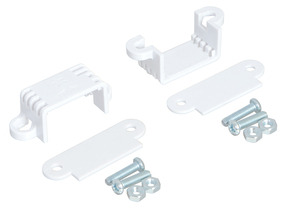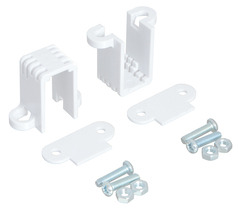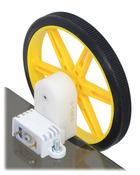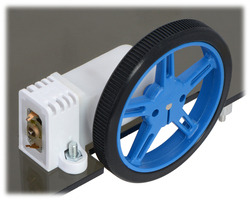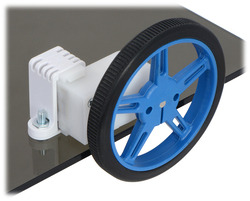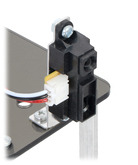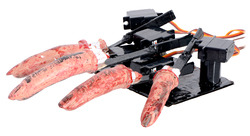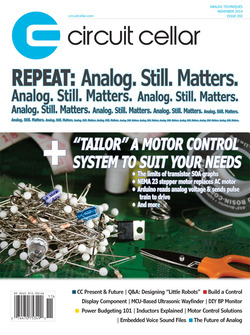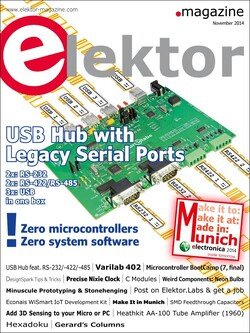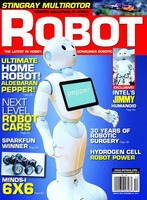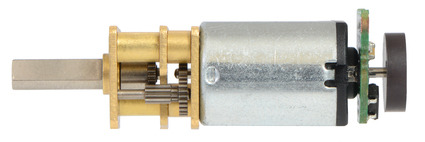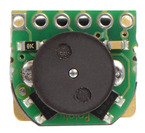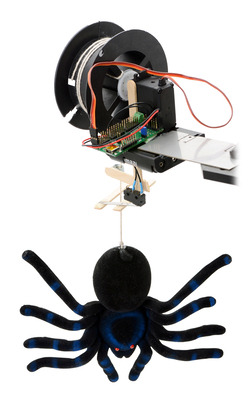Pololu Blog »
Pololu Blog (Page 55)
Welcome to the Pololu Blog, where we provide updates about what we and our customers are doing and thinking about. This blog used to be Pololu president Jan Malášek’s Engage Your Brain blog; you can view just those posts here.
Popular tags: community projects new products raspberry pi arduino more…
New products: Brackets for mini plastic gearmotors
Our mini plastic gearmotors make great low-cost actuators for small robots, but they have one major shortcoming: they are not easy to mount (the offset versions have just one mounting hole and the 90° versions don’t have any). Well, today I am pleased to announce that we now have two mounting solutions!
|
|
These new plastic brackets, available in a wide version and a tall version, are designed specifically for our mini plastic gearmotors, with internal ridges that fit into recessed features on the gearmotors to hold them securely in place. Both brackets are compatible with all of our mini plastic gearmotors, and the two versions allow for different mounting orientations, some of which can be seen in the pictures below:
|
|
|
|
|
In some orientations, features of the mini plastic gearmotor cases prevent them from being flush with a flat mounting surface. To address this, we include a spacer plate with each bracket that fits between the gearmotor and the mounting surface in these orientations, keeping the motor level. If you look closely at the pictures above, you can see the spacer plate being used in three of them.
These new brackets are sold in pairs along with mounting hardware (two M3 screws and nuts per bracket).
See the product pages for additional information:
Video: Introducing the DRV8835 Dual Motor Driver Kit for Raspberry Pi B+
We have a new video for our DRV8835 Dual Motor Driver Kit for Raspberry Pi B+. The video gives an overview of some of its features and mentions a few considerations for working with it. Check it out, and get some ideas for a cool Raspberry Pi robot!
New products: Brackets for Sharp GP2Y0A02, GP2Y0A21, and GP2Y0A41 distance sensors
Our new stamped aluminum L-brackets are specifically designed for Sharp’s popular analog GP2Y0A02, GP2Y0A21, and GP2Y0A41 distance sensors, making it easy to mount them to your project in a variety of ways. The brackets are made of 0.8mm-thick aluminum, so they are light and bendable by hand if your application calls for something other than their default 90° angle, yet they are rigid enough to hold their position while in use.
These new brackets are sold in pairs and are available in three different versions: compact perpendicular and parallel versions, and a slightly larger but more versatile multi-option version.
|
|
|
The appropriate bracket for your project depends on the specifics of how you would like to mount it. For example, if you want a low-profile installation on a horizontal surface, the parallel bracket (pictured above on the left) is a good choice. For a low-profile installation off of a vertical surface, the perpendicular bracket (pictured above on the right) might be most appropriate. The multi-option bracket (pictured above in the center) allows the sensor to be mounted to either face, so it supports both perpendicular and parallel orientations, and the long slots offer a lot of flexibility in sensor placement relative to the mounting surface.
See the product pages for additional information:
- Bracket Pair for Sharp GP2Y0A02, GP2Y0A21, and GP2Y0A41 Distance Sensors – Perpendicular
- Bracket Pair for Sharp GP2Y0A02, GP2Y0A21, and GP2Y0A41 Distance Sensors – Parallel
- Bracket Pair for Sharp GP2Y0A02, GP2Y0A21, and GP2Y0A41 Distance Sensors – Multi-Option
Raspberry Pi-controlled chicken coop
 |
Forum user bennard posted about his WiFi-enabled chicken coop, which uses a Raspberry Pi to monitor and log data about its environment, serve a web page, send emails, and open and close the coop door. The system has sensors for detecting temperature, humidity, motion, and light, and includes a 50W solar panel and solar charge controller for recharging its batteries. The automated door is a hinged piece of wood that is connected to a linear actuator (via this mounting bracket) and controlled by a jrk 21v3 motor controller.
You can learn more about bennard’s project in his forum post.
Simple Animatronic Skull, Part 2
As promised in my previous animatronic skull post, this is the update where I integrate the skull with a baby doll. I would like to introduce you to Daisy Spooks. Continued…
Severed fingers Halloween prop
At Halloween parties, it is common to see a punch bowl with one or more eyeballs floating in it and stomach-churning decorations like severed fingers or gelatin worms lining the festive dishes. However, the problem with most of these is that they are motionless and bland. Inspired by Thing, the disembodied hand from The Addams Family, I decided to make a creepy animatronic hand to add some thrill to an otherwise boring table display. Continued…
Free magazines: Circuit Cellar, Elektor, and now Robot!
|
|
Get FREE copies of Circuit Cellar magazine’s November issue and Elektor magazine’s November issue with your order, while supplies last. To get your free issues, enter the coupon codes CIRCUIT1114 and ELEKTOR1114 into your shopping cart. Each magazine will add 6 ounces to the package weight when calculating your shipping options.
For back issues and more information, see our free Circuit Cellar magazine offers and free Elektor magazine offers.
Introducing Robot Magazine
We are now also offering free issues of Robot, a bimonthly magazine specifically for the robot enthusiast! We have the three most recent issues available, while supplies last:
|
|
|
To get your free issues, enter the coupon codes ROBOT0714, ROBOT0914, and ROBOT1114 for July/August, September/October, and November/December, respectively. Each magazine will add 6 ounces to the package weight when calculating your shipping options.
For more information, see our free Robot Magazine offers category.
New products: MP micro metal gearmotors with extended motor shafts
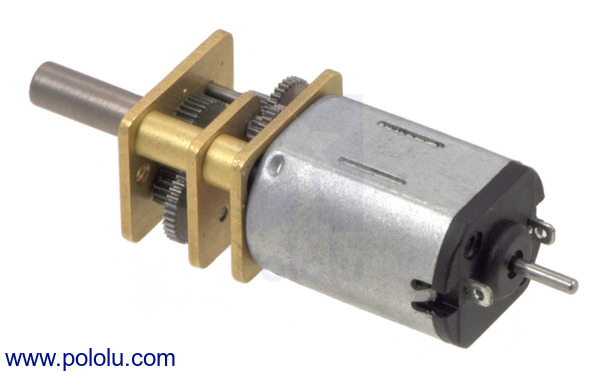 |
Several gear ratios of our medium-power (MP) micro metal gearmotors are now available with extended motor shafts:
- 10:1 MP micro metal gearmotor with extended motor shaft – 2200 RPM (no-load) and 3 oz-in torque (stall) at 6 V
- 75:1 MP micro metal gearmotor with extended motor shaft – 290 RPM (no-load) and 17 oz-in torque (stall) at 6 V
- 100:1 MP micro metal gearmotor with extended motor shaft – 220 RPM (no-load) and 19 oz-in torque (stall) at 6 V
The extended motor shaft rotates at the same speed as the input to the gearbox and offers a way to add an encoder, such as our new magnetic encoder for micro metal gearmotors (pictured below), to provide motor speed or position feedback.
|
|
For more information, see the product pages or check out our entire category of micro metal gearmotors.
Candy bowl surprise
Anyone who has gone trick-or-treating has seen the house that puts a bowl of candy on the front porch and knows that there are those greedy trick-or-treaters who take more candy than they are supposed to. Well, if you are that person who puts the bowl of candy out on your front porch, you can make trick-or-treaters think twice before they take more than one piece of candy. In this project, I actuate a severed arm to slap down at the candy bowl whenever someone goes to reach into it. Continued…
Ascending/descending spider
This animated spider prop takes a traditionally static Halloween display to new heights! The setup is simple: a Maestro servo controller and a continuous rotation servo raise and lower a spider with the help of a limit switch. Continued…
